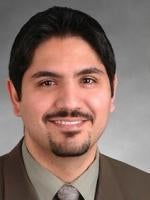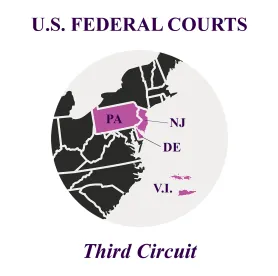The Third Circuit is expected to soon make a decision as to whether student-athletes can be considered university “employees” under the Fair Labor Standards Act (“FLSA”). But its interpretation of the law might reverberate beyond the confines of college sports and could implicate whether unpaid student interns must also be treated as employees.
In late 2019, Ralph Johnson, a former Villanova University football player, initiated a class action in the Eastern District of Pennsylvania, Johnson et al. v. National Collegiate Athletic Association et al., asserting that student-athletes in Pennsylvania, New York, and Connecticut qualify as university “employees” under the FLSA, and thus must be compensated for their time spent related to their athletic activities.
In early 2020, the university defendants filed a motion to dismiss on the grounds that (1) student-athletes are amateurs; (2) the Department of Labor already determined that student-athletes do not qualify as employees under the FLSA; and (3) student-athletes do not meet the multifactor test for student employment under Glatt v. Fox Searchlight Pictures, Inc., 811 F.3d 528 (2d Cir. 2016). In 2021, the District Court denied the motion to dismiss, finding that the student-athletes plausibly alleged a claim that they are employees of their universities.
In February 2022, the Third Circuit granted the university defendants’ petition to appeal that decision to decide the following question: “Whether NCAA Division I student athletes can be employees of the colleges and universities they attend for purposes of the Fair Labor Standards Act solely by virtue of their participation in interscholastic athletics.”
The Third Circuit is scheduled to begin oral arguments on January 18, 2023.
While the Seventh and Ninth Circuits previously considered and rejected the argument that college students are employees, much has changed in the last two years. Namely, after numerous states passed laws to permit student-athletes to seek compensation in exchange for use of their name, image and likeness, the Supreme Court’s decision in NCAA v. Alston, 141 S. Ct. 2141 (2021) rejected the NCAA’s argument that all limits on student-athlete compensation are lawful; and soon after, the NCAA adopted an interim policy to allow student-athletes nationwide to profit off their name, image, and likeness. Further, wider recognition of how many hours student-athletes are required to devote to their teams while some universities greatly benefit financially from those efforts could change how courts interpret who qualifies as an employee under the FLSA and relevant Department of Labor regulations. In fact, the District Court here found that, if the plaintiffs’ allegations are proven, then student-athletes would be more akin to employees under the Glatt multi-factor test.
NCAA Amateurism
For more than a hundred years, amateurism—meaning student-athletes cannot be paid—has been a hallmark of NCAA athletics, and one of the primary arguments for rejecting any argument that student-athletes are “employees.” However, Alston found that the NCAA’s bar on education-related benefits violated antitrust law, and thus rejected the argument that all limits on student-athlete compensation are lawful. Similarly, in the present case, the District Court rejected the “circular” argument that student-athletes should not be paid because they are amateurs, and that such student-athletes are amateurs because the NCAA forbids paying them. While the Third Circuit will not likely conclude that student-athletes are all employees entitled to wages, it may likely follow the Supreme Court’s recent precedent in Alston and find the universities’ amateurism argument – without more – unavailing.
Department of Labor’s Interpretation
Another historical argument, supporting the position that college athletes are not “employees,” relies on applicable guidance from the Department of Labor (“DOL” or “Department”). Using that, the defendant universities here argue that applicable DOL guidance on the matter supports its contention that student-athletes are not employees. For instance, the Field Operations Handbook, published by the Department’s Wage and Hour Division, notes that interscholastic athletics that are “conducted primarily for the benefit of the participants … are not work of the kind contemplated by . . . the Act and do not result in an employer-employee relationship between the student and the school or institution.” FOH § 10b03(e). However, the District Court found that the student-athletes plausibly alleged that intercollegiate sports are not conducted primarily for the benefit of student-athletes, but rather for the financial benefit of the NCAA and its member institutions, especially given the billions in annual revenue generated by these sports. On the other hand, it should be noted that a majority of universities lose money on their athletic programs while student-athletes gain at least some intangible benefits (such as leadership experience, professional opportunities, etc.). As such, it remains unclear how the Third Circuit will treat this argument. It appears more likely the Third Circuit will look to the Glatt test discussed below.
Definition of “Employee” Under the FLSA
The Third Circuit has previously provided that “courts must look to the economic realities of the relationship in determining employee status under the FLSA.” Safarian v. Am. DG Energy Inc., 622 F. App’x 149, 151 (3d Cir. 2015). To make this assessment, the District Court looked to the Glatt test, a non-exhaustive seven factor test used to assess whether an unpaid student-intern should be treated as a paid employee. See Glatt, 811 F.3d at 536-37. While no one factor is dispositive, the central question under Glatt is whether the employer or the student is the primary beneficiary of the work. If the evidence suggests employers are merely attempting to exploit students willing to work for free, then the student is likely entitled to wages. The test uses the seven following factors:
-
The extent to which the intern and the employer clearly understand that there is no expectation of compensation. Any promise of compensation, express or implied, suggests that the intern is an employee—and vice versa.
-
The extent to which the internship provides training that would be similar to that which would be given in an educational environment, including the clinical and other hands-on training provided by educational institutions.
-
The extent to which the internship is tied to the intern’s formal education program by integrated coursework or the receipt of academic credit.
-
The extent to which the internship accommodates the intern’s academic commitments by corresponding to the academic calendar.
-
The extent to which the internship’s duration is limited to the period in which the internship provides the intern with beneficial learning.
-
The extent to which the intern’s work complements, rather than displaces, the work of paid employees while providing significant educational benefits to the intern.
-
The extent to which the intern and the employer understand that the internship is conducted without entitlement to a paid job at the conclusion of the internship.
The District Court found that the Complaint’s allegations, if proven, would support a finding that (i) factors 1 and 7 suggest the plaintiffs are not university employees; (ii) factors 2 and 5 remain neutral; and (iii) factors 3, 4, and 6 suggest the student-athletes are university employees for the following reasons:
-
Factor 3—Because NCAA sports do not integrate coursework or give student-athletes academic credit, intercollegiate sports are not tied to the student-athlete’s formal education program.
-
Factor 4—Because student-athletes often spend more than 30 hours per week on their sport and because their schedules often bar them from taking certain classes or majoring in certain subjects, participation in intercollegiate sports does not accommodate their academic pursuits.
-
Factor 6—Because student-athletes gain no significant academic benefit from their participation, participation in intercollegiate sports is more akin to employment than a beneficial learning experience.
Given several of the factors suggest the student-athletes should be treated as employees, the District Court found that plaintiffs plausibly alleged a claim that they are university employees under the Glatt test.
Implications of the Third Circuit’s Decision for Universities
If the Third Circuit finds that the universities’ motion to dismiss should have been granted, then the bar on student-athletes qualifying as university employees would remain intact. Such an outcome would follow previous decisions by the Seventh and Ninth Circuits which held that student-athletes cannot be deemed employees. See Berger v. NCAA, 843 F.3d 285 (7th Cir. 2016); Dawson v. NCAA, 932 F.3d 905 (9th Cir. 2019).
However, if the Third Circuit finds that plaintiffs might qualify as employees, a circuit split would likely spur a Supreme Court decision on the issue. In the meantime, universities—whether involved in this litigation or not—would be faced with the possibility that their student-athletes should be treated as employees. Under these circumstances, not only would they have to grapple with the financial responsibility of paying a minimum wage and overtime to student-athletes, but they would also have to face the avalanche of state and federal employment laws and compliance obligations that would be triggered as a result.
While many universities—especially those that already lose money on their athletic programs—could not afford to have their student-athletes be deemed employees, some universities could make adjustments to their athletic programs to increase the likelihood that their student-athletes will not be found to be employees under Glatt. In particular, universities could consider strategies such as:
-
Such a program could provide significant educational benefits to student-athletes, and satisfy factors 3 and 6 from Glatt.
-
Providing student-athletes with more flexible training schedules that allow them more freedom to enroll in classes of interest. This may be achieved by organizing both morning and nighttime training options and/or by providing student-athletes with early morning or later evening courses which would give student-athletes a greater ability to fit in both their training and the specific classes they wish to take.
Implications of the Third Circuit’s Decision for Employers Engaging Unpaid Student Interns
A Third Circuit interpretation of the Glatt test carries significance beyond the realm of intercollegiate athletic programs. In particular, any company that engages unpaid student interns should keep an eye on this decision as it could impact whether such unpaid interns are entitled to wages. In the meantime, employers should consider the Glatt test’s seven factors to ensure their unpaid internships do, in fact, provide students with beneficial educational experiences.




 />i
/>i
